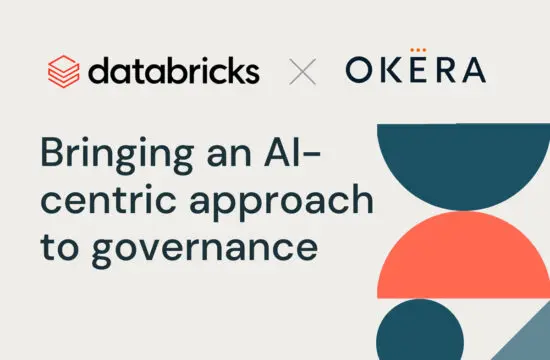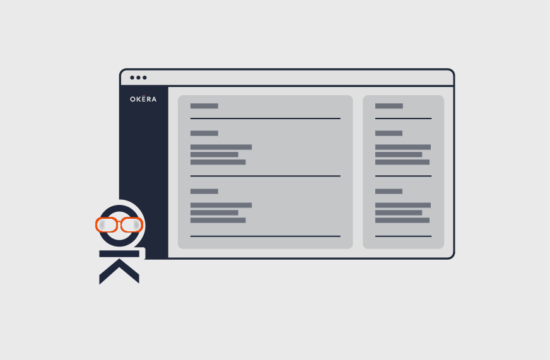For modern businesses, data is like oxygen: without a constant supply, they simply cannot operate. Big data specifically, has empowered leaders in unparalleled ways, from complex decision-making to customer insights. But making strides and improving business operations comes at a cost.
While organizations have quickly discovered that generating and analyzing high volumes of data is one thing, keeping it secure is another. As such, big data analytics security has become a growing priority for leaders, with many fearing that a single security breach could lead to a significant reputational hit, extensive fines, or other loss of revenue.
At Okera, we believe the first step towards solving these problems is understanding them. In this article, we explore exactly what security means to big data and analytics—and what leaders can do to ensure their big data analytics system is safe.
What Makes Security for Big Data so Difficult?
Security for big data can be complex, particularly since many big data tools were not designed with security in mind. Many big data software frameworks, like Hadoop, use distributed data processing through multiple systems for faster analysis. More systems mean more security issues.
The qualities that make big data so valuable for organizations also make security for big data complex. Massive data volume from a huge variety of internal and external data sources means there are multiple integration points, leaving endpoint vulnerabilities. There’s also variety in data format—structured, semi-structured, and unstructured, and before obtaining insights or employing it for machine learning, it must pass through multiple hands and transformation processes. These things increase the opportunity for a security breach.
Finally, when you have sensitive data—and all organizations do—it can be a challenge to grant access to the data people need since big data tools aren’t typically designed for granular access.
Top 3 Big Data Analytics Security Mistakes
Thanks to the above mentioned challenges, most organizations still struggle to use big data responsibly. They know it takes fine-grained access control, but since big data technologies don’t have them built in, they come up with workarounds that leave them with an administrative nightmare and vulnerable to attack.
Here are three ways enterprises have tried and failed to provide secure, granular data access to their users.
#1 Creating Personalized Data Copies for Analytics
Data engineers sometimes make ‘secure’ copies of a complete dataset, but filter, mask, or tokenize all PII (personally identifiable information) and other sensitive data. There are several challenges with this approach. There are many potential use cases, and when data engineers create copies to serve each one, the number of datasets to manage can quickly spin out of control. Each data copy must now be managed and secured.
Because the datasets are so voluminous, making personalized copies creates the need for more storage. More storage also involves more data movement, ultimately increasing the attack surface and storage costs. And with the continuous introduction of new copies, it becomes harder to keep up with older copies. This further increases the surface area of attacks and reduces the consistency of data present within the organization, ultimately reducing the accuracy of analytics efforts.
#2 Utilizing Unique Database Views for Each Stakeholder
While utilizing unique database views for each stakeholder won’t create multiple datasets—leaving only one version of data to manage and eliminating extra storage costs—it causes similar problems as creating personalized copies for different use cases. By creating multiple views filtered for various end-user cases, organizations end up with ‘view explosion.’
These database views also act as a policy, which may not involve adequate input from data governance teams and other relevant stakeholders. This results in a policy that may not meet compliance, security, and business needs. It’s also hard for businesses and auditors to understand how these policies are defined, so enforcing and showing compliance is challenging. In the end, though views are an improvement over database copies, they still leave you with a fragmented, inconsistent approach that was not designed for big data security and privacy.
#3 Relying on Outdated Access Control Solutions
Many organizations employ access control via policies and roles to control access to organizational data. Access control uses policies to manage authorizations to business users based on their position within the organization. However, as business needs grow and security risks evolve, your data access control system must also evolve to accommodate and ward off stronger attacks. Outdated access solutions may lack the flexibility and interoperability needed to integrate with modern cloud solutions to improve security and functionality. Equally, these solutions likely require further upgrades to stay functional. That means your employees have to spend their time fixing outdated solutions instead of being productive.
Secure Big Data Analytics with a Dynamic Data Access Platform
Big data provides a vital source of revenue growth for data-driven organizations. It allows organizations to create unprecedented value and insight, but the data volume, variety, and velocity make securing big data analytics more difficult.
To ensure big data security and compliance, organizations should:
- Use ONE single source of authoritative data with fine-grained access controls
- Combine ABAC (attribute-based access control) with RBAC (role-based access control)
- Adopt a technology-agnostic universal data authorization platform
Find out how you can do all of these things, establish better data management policies, and use sensitive data responsibly with Okera.



